California and a bit of Nevada, 2021
In late May, 2021, I made a trip out west. I spent a couple of days
near the California - Nevada border, exploring Death Valley and Nevada.
Then I went to my parent's house in Ridgecrest, CA, for several days.
I had a great visit with my folks.
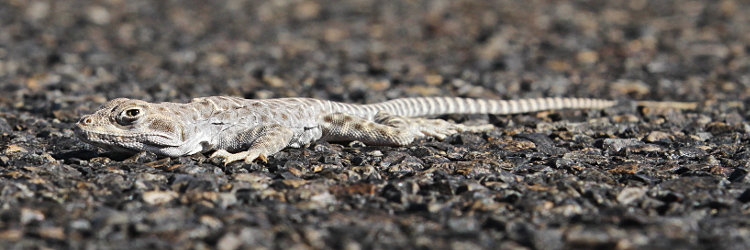
Lepster, hunkered down on the blacktop early in the morning.
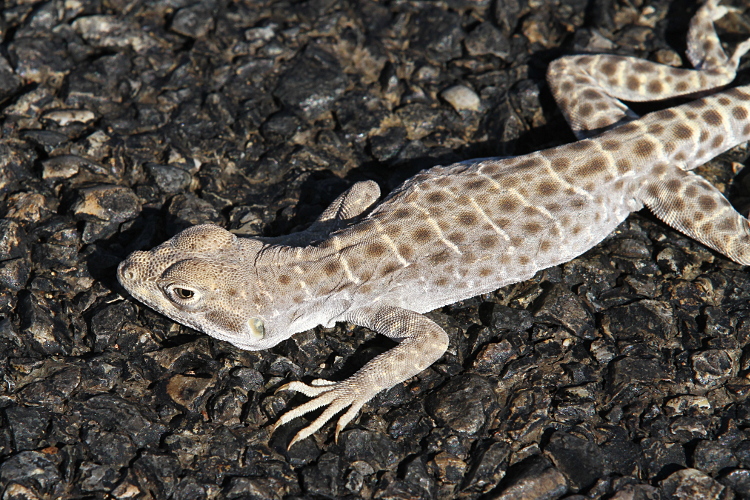
Another look at the Leopard Lizard (Gambelia wislizenii).
Looks like it could use a couple of sideblotches...
I have always been intrigued by sand dunes. There are a lot of things to like
about them. One cool thing is that you get a clean slate every time the wind
blows. I checked out a number of them on my trip.
You will see that I visited several on this trip.
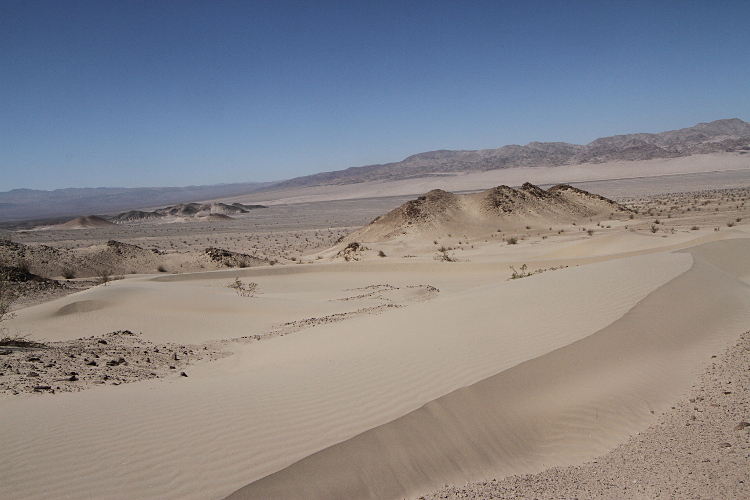
Some sand in the southern end of Death Valley. This is a very harsh
environment. The average rainfall is <2” per year. The creosote bushes are
scraggly and very widely spaced. The density of mammal burrows and lizards is
very low, but not zero.
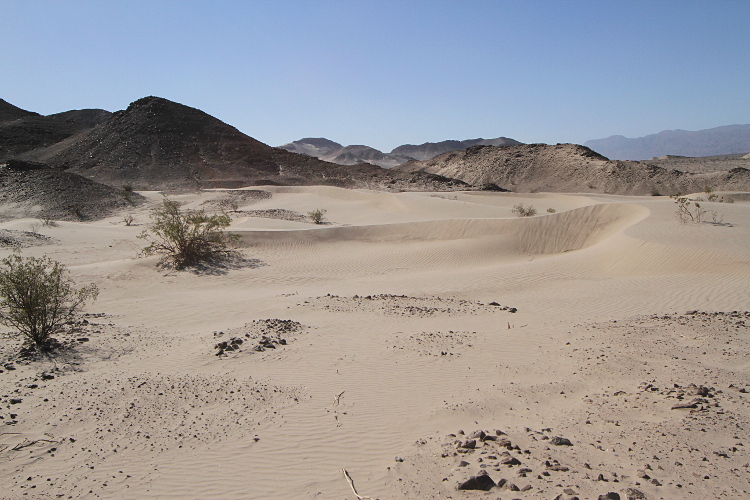
More southern Death Valley.
I saw a number of Zebra-tailed Lizards (Callisaurus draconoides)
in the the desert.
I have always appreciated this lizard because it is sleek and
an extremely fast sprinter. It also has a very cool scientific name.
The genus name Callisaurus is derived from the Greek phrase
“beautiful lizard.” The species name draconoides is Greek for
“similar to a dragon (draco).” I believe that Draco was a
particular dragon from Greek mythology that is also the name of a
constellation. I wonder if this also relates to the word draconian?
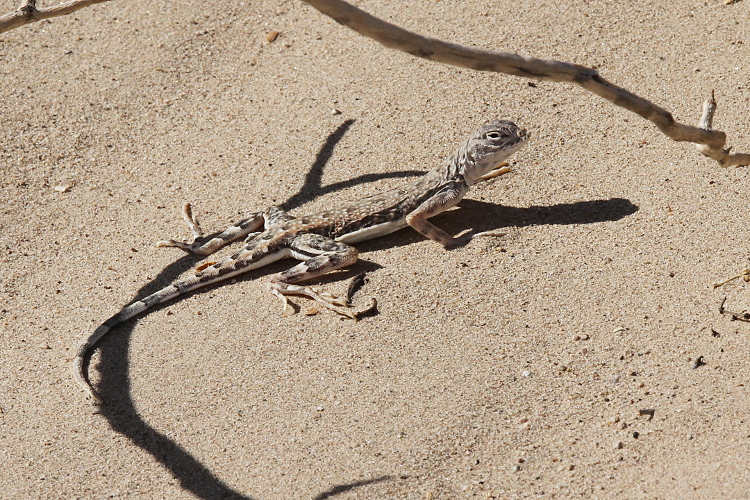
A Zebra-tailed Lizard (Callisaurus draconoides).
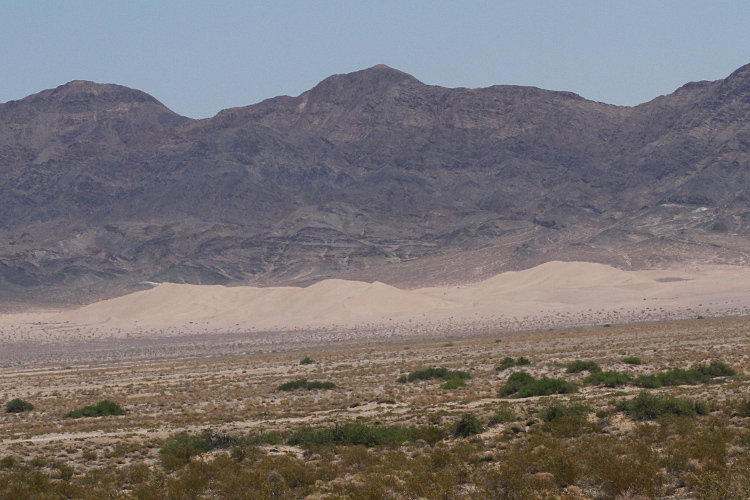
The Ibex Dunes, see from afar.
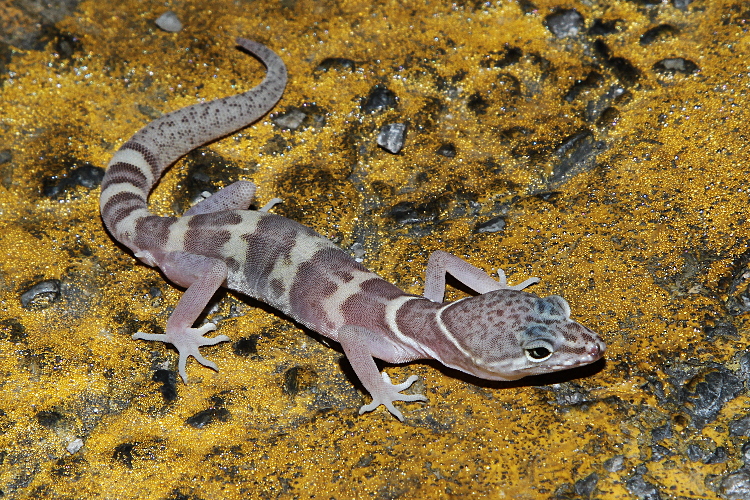
A Western Banded Gecko (Coleonyx variegatus).
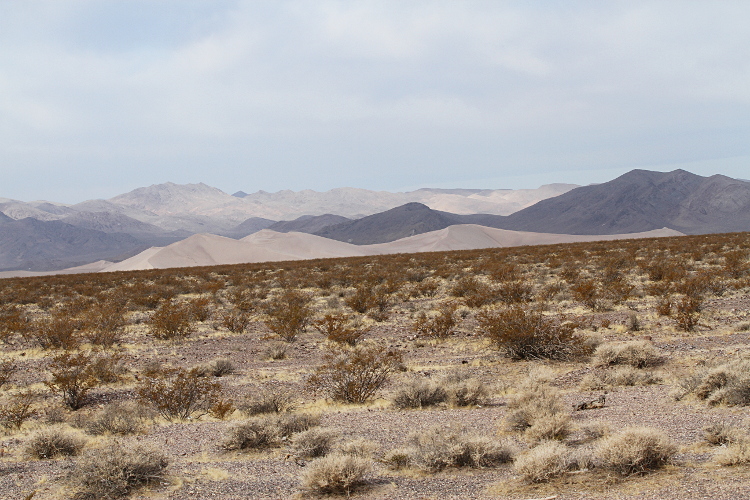
The Big Dune in the Amargosa Valley, NV.
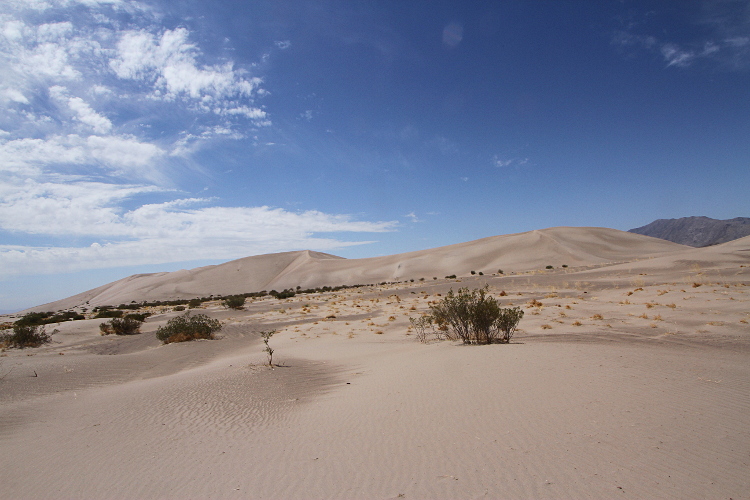
Big Dune.
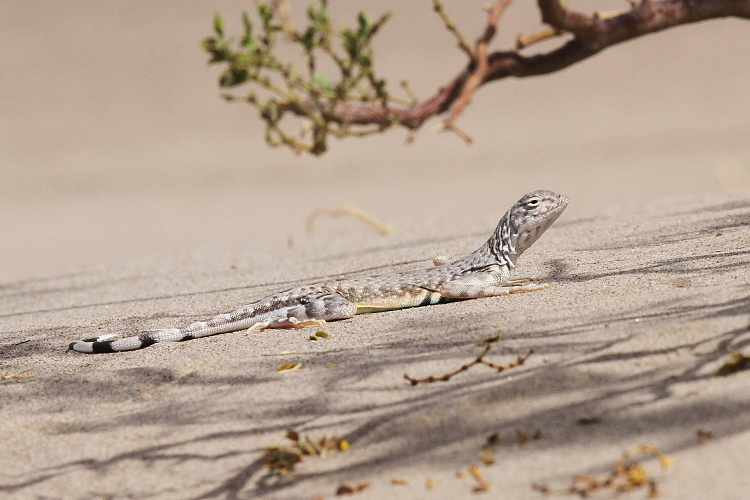
A Zebra-tailed Lizard (Callisaurus draconoides).
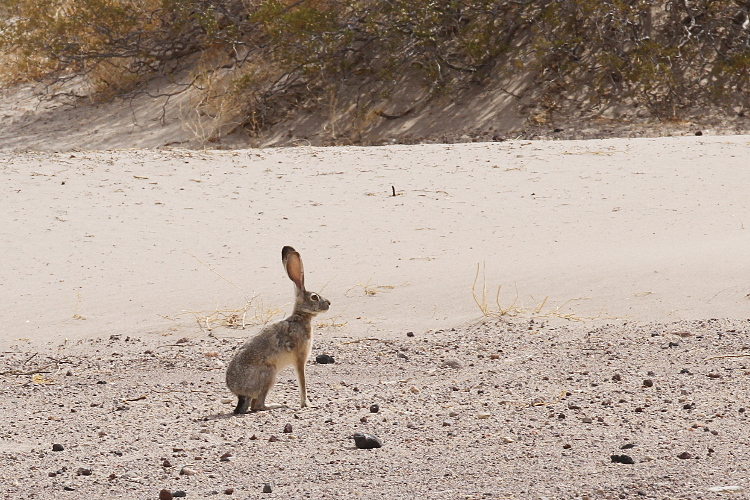
A Black-tailed Jackrabbit (Lepus californicus).
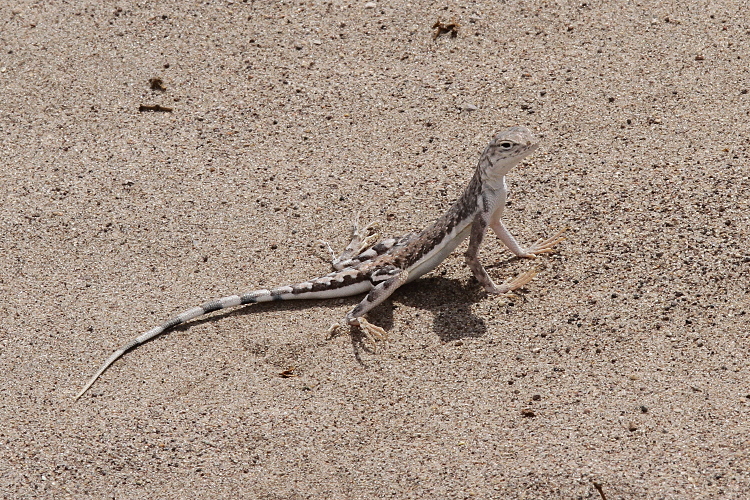
A Zebra-tailed Lizard (Callisaurus draconoides).

Lava Dune in the Amargosa Valley is an interesting mix of sand and lava rock.
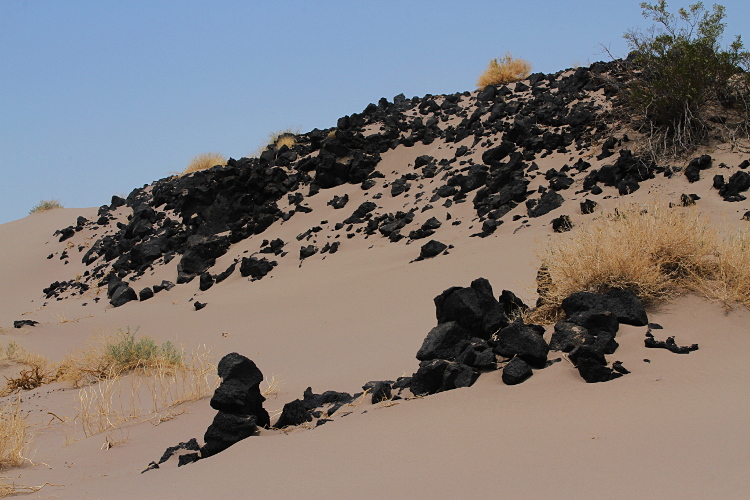
Lava Dune.
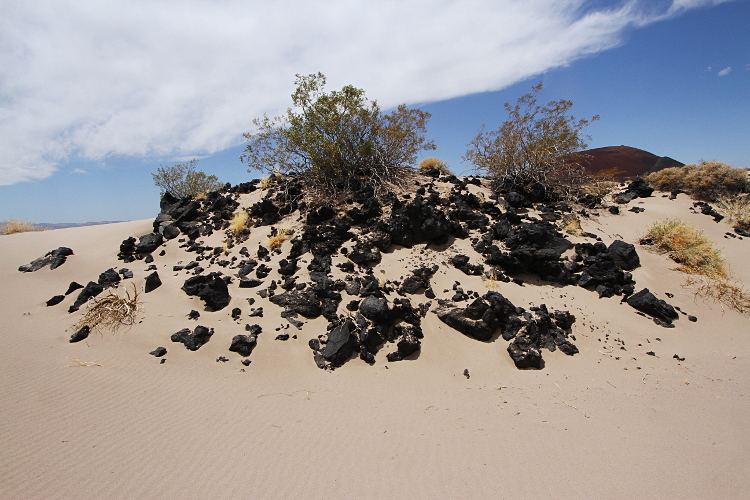
Lava Dune.
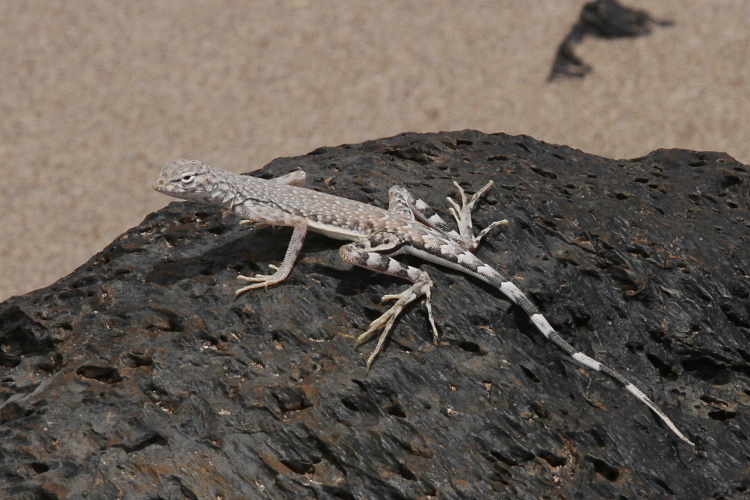
A Zebra-tailed Lizard (Callisaurus draconoides).
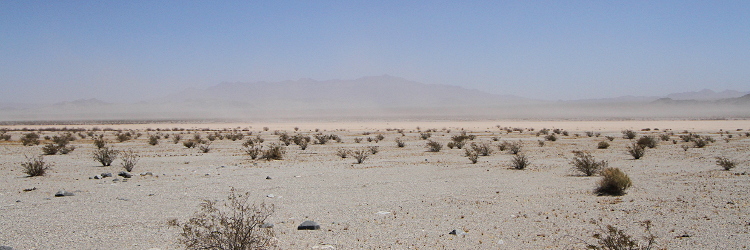
This how sand dunes are made and maintained. Strong wind. There were high
winds for most of my trip (I guess the wind and I have a love-hate
relationship). In this case, the winds are about 40 mph, whipping over
Silurian Dry Lake. Keeping the Dumont Dunes well fed with sand.
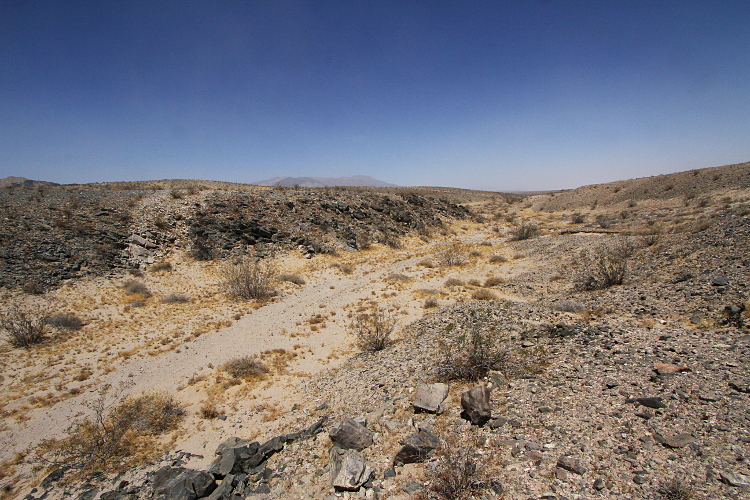
The outlet of Silver (Dry) Lake. The Mojave River starts in the
San Bernardino Mountains and flows out into the Mojave Desert.
Silver Lake is normally considered the terminus.
However, in an exceptionally wet year, it overflows through this
outlet, into the Amergosa River drainage, where the water may
reach the botom of Death Valley, at Badwater.
On the way to my parents, I stopped by the old Lake Dolores water park east
of Barstow.
Almost exactly 37 years ago my graduating class took our senior trip here.
We were definitely living large back in the day.
Now it is long abandoned and there is no water.
Ashes to ashes and dust to dust. Makes one feel just a little bit old...
Here's a cool old youtube video of how it was when we went:
Lake Dolores informational video.
I did both the stand-up water slide and the tram / zipline over the dirt hill.
I'm sure the lawyers and insurance companies would not let this kind of
thing fly today.
And here is a very well done skateboarding video filmed there about
10 years ago, in the abandoned period:
Kilian Martin: Altered Route.
I got a bit emotional watching it. It's kind of a metaphor for how I feel
about returning to Ridgecrest and the desert anymore.
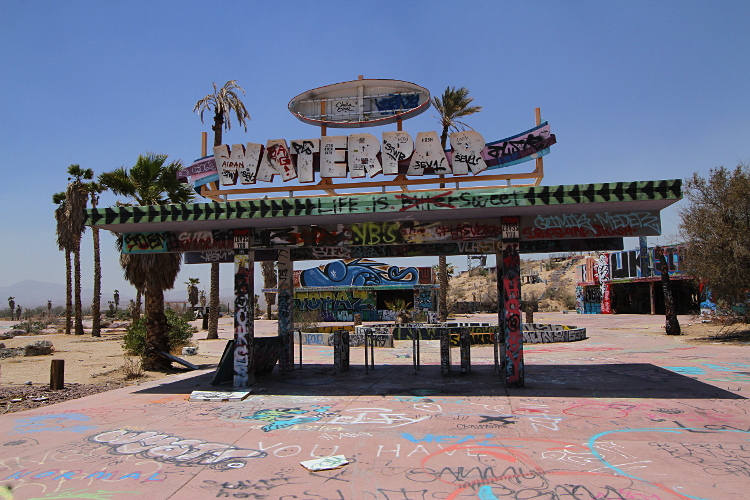
The entrance.
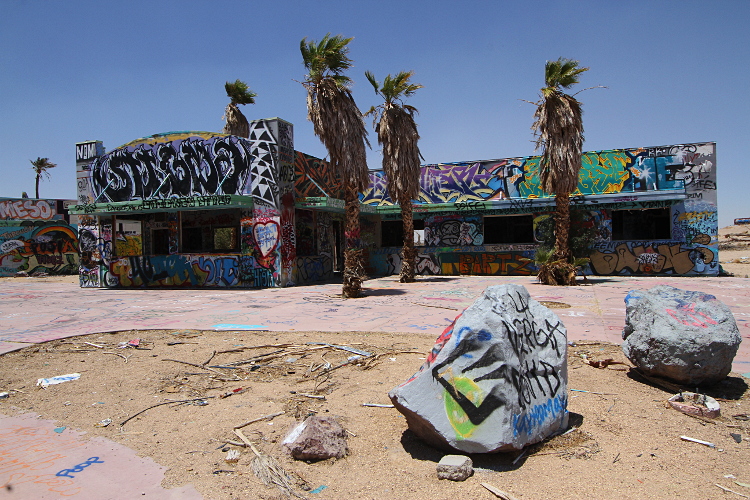
Arcades. It had actually been extensively remodeled since my previous visit.
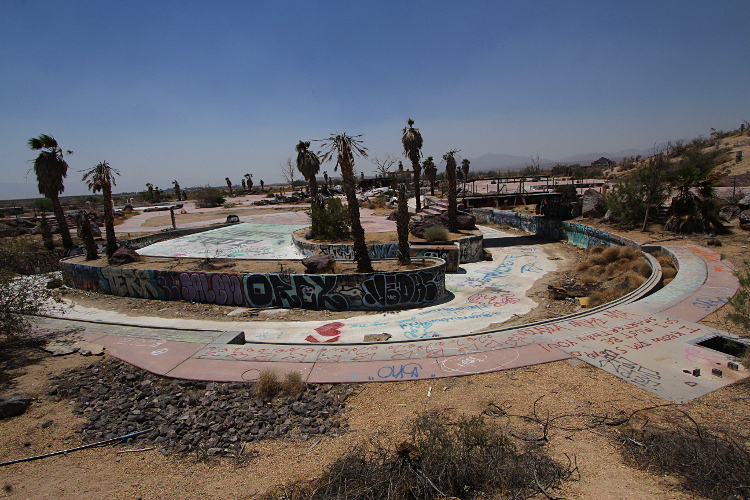
Dirt and tumbleweeds.
The town of Hinkley, CA is located about 15 miles west of Barstow, about an
hour's drive south from Ridgecrest. It has seen better days.
In the 1950s and 60s, PG&E knowingly dumped waste water contaminated with
hexavalent chromium into unlined ponds. This led to groundwater
contamination and health problems for the residents. The sad story is the
subject of the movie Erin Brockovich starring Julia Roberts, which you
may remember (By the way, I saw the real Erin Brockovich speak at
Ohio University in 2007). Hinkley is slowly becoming a ghost town.
Unfortunately, history often repeats itself. DuPont has done essentially
the same thing with C8 to Parkersburg, WV, about 40 miles east of where
I live now.
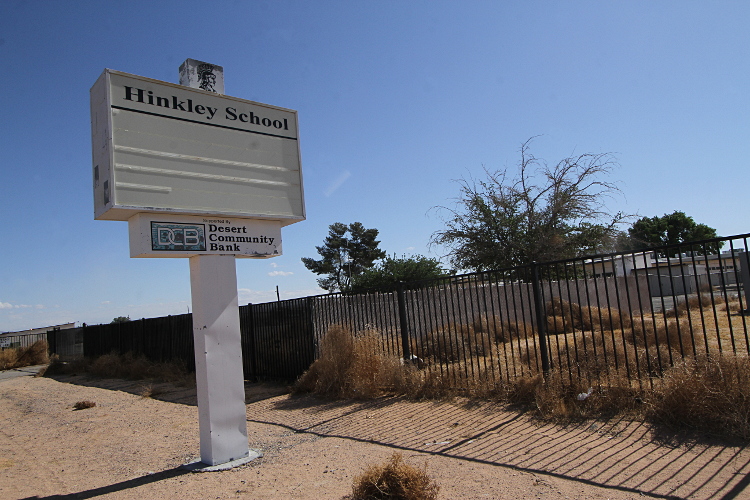
Here is photo of the Hinkcley School, which closed in 2014.
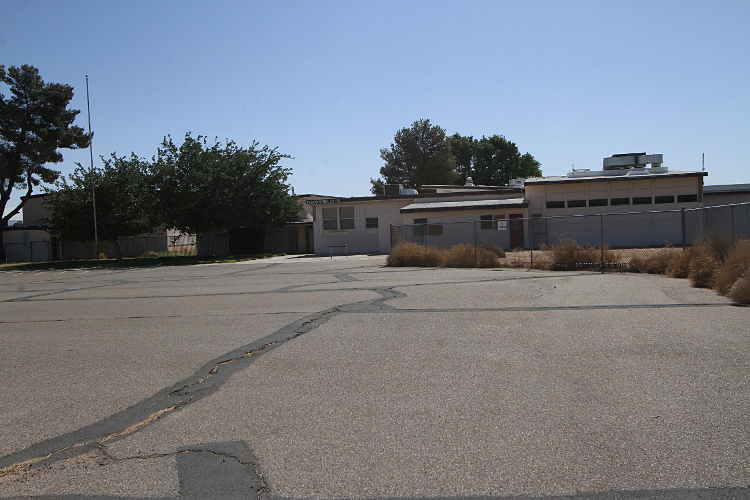
The Hinckley School. Lots of tumbleweeds.
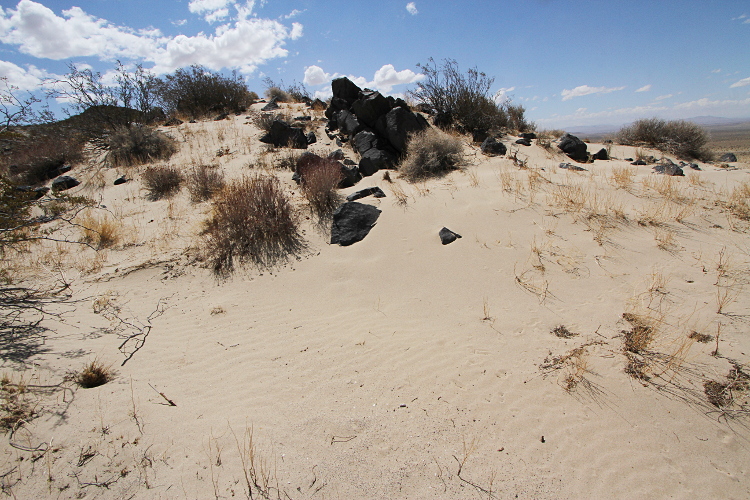
Another area with rocky dunes.
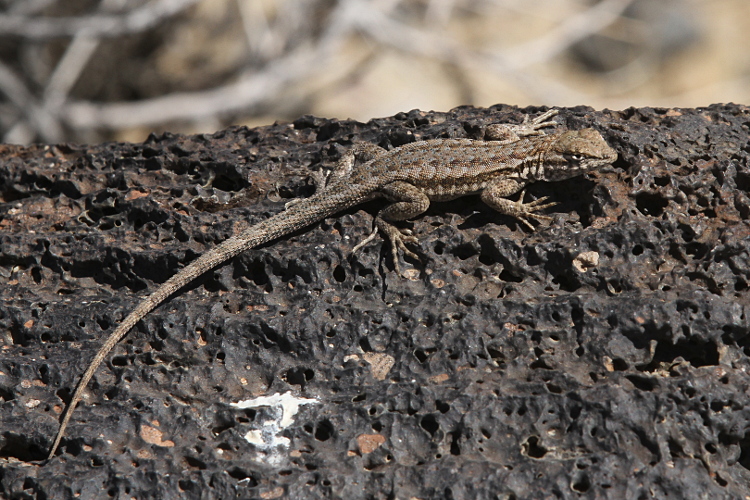
Side-blotched Lizard (Uta stansburiana).
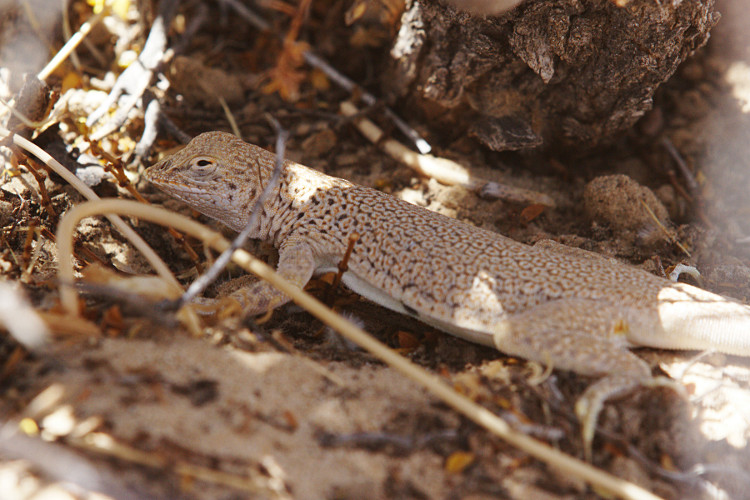
Mojave Fringe-toed Lizard (Uma scoparia).
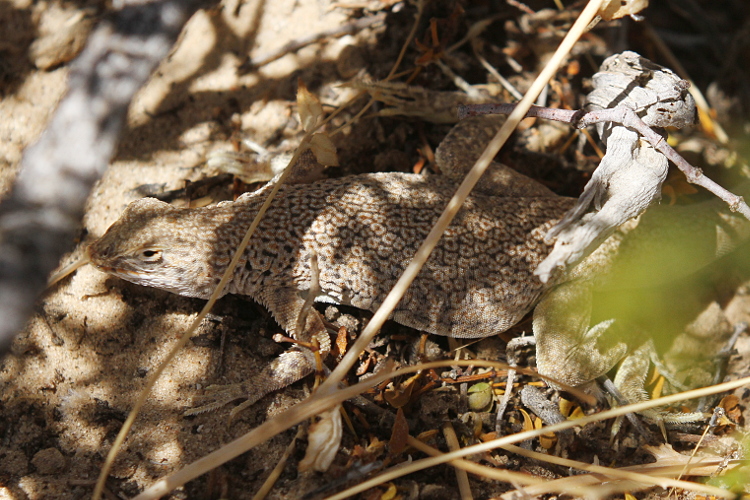
Mojave Fringe-toed Lizard (Uma scoparia).
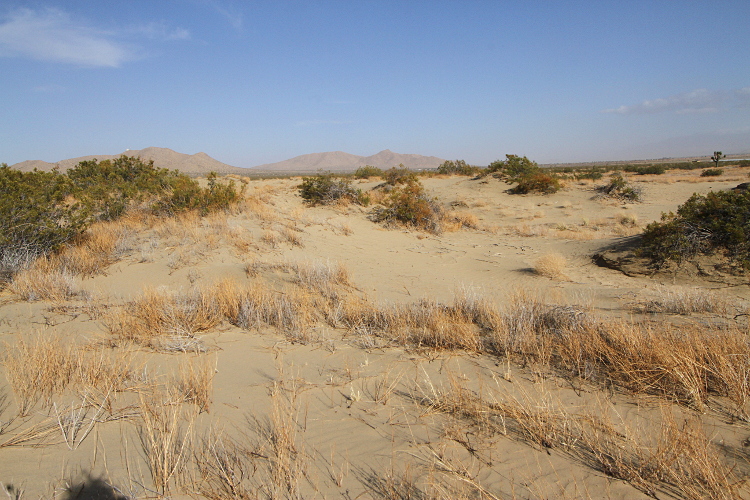
In the high desert, there is more rain and the creosote bushes are much
larger and form anchors for the dunes.
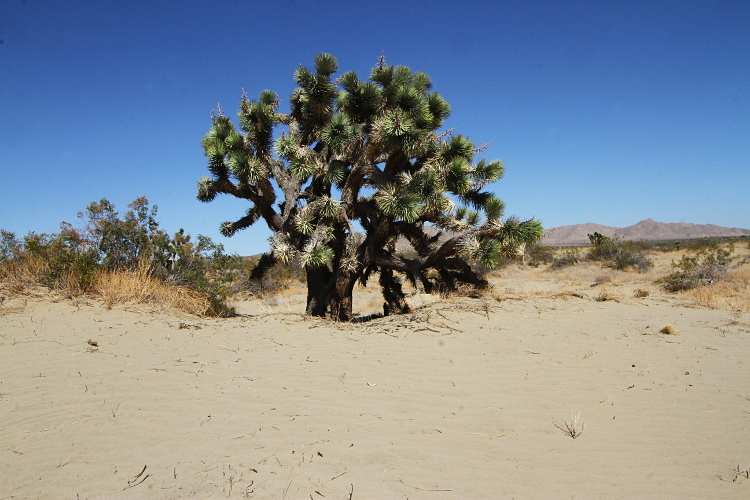
There are even a few Joshua Trees in the dunes.
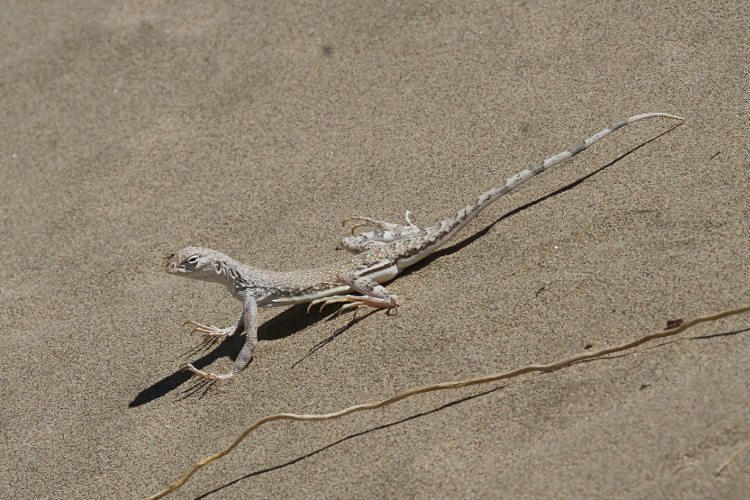
A Zebra-tailed Lizard (Callisaurus draconoides).
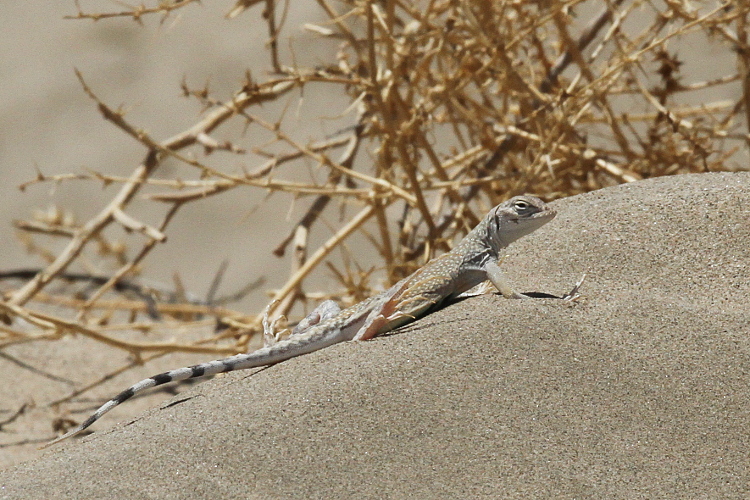
A Zebra-tailed Lizard (Callisaurus draconoides).
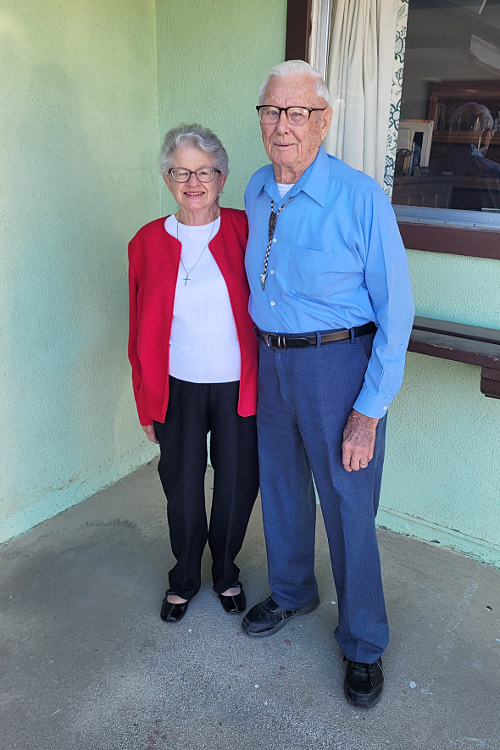
My parents.
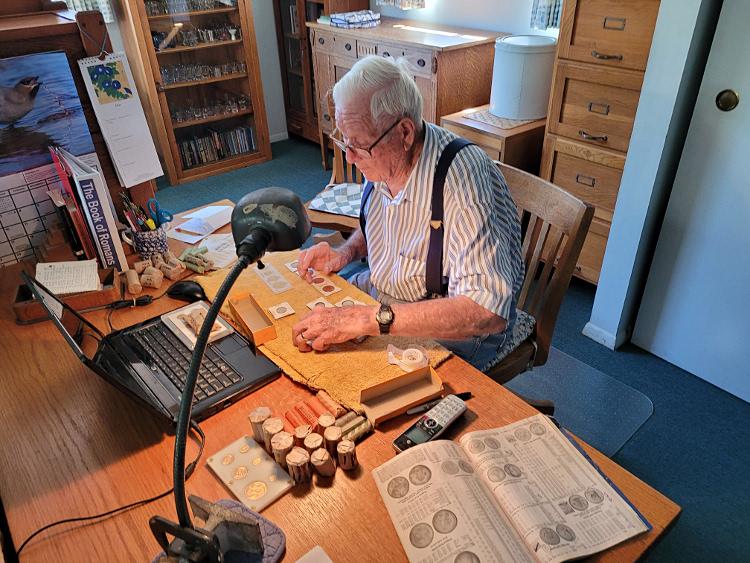
Dad studying his coin collection.
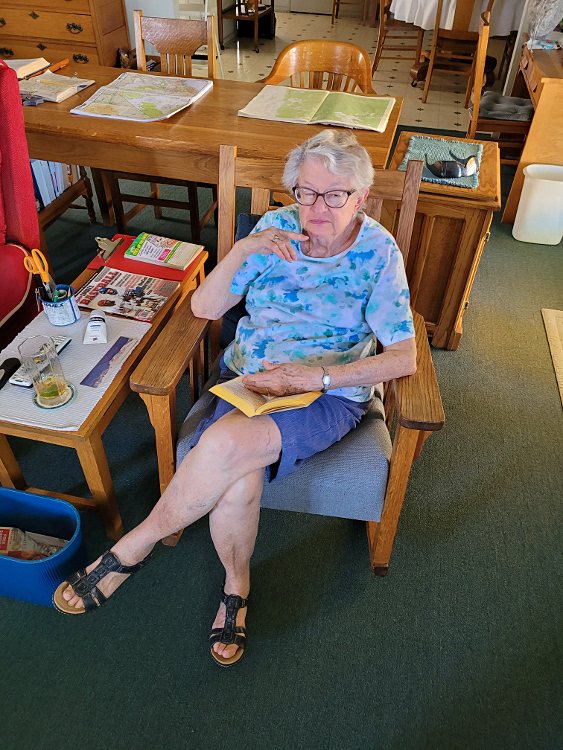
Mom. I just interrupted her reading...
Llano del Rio is no ordinary ghost town. It is located in the Antelope Valley,
near the San Gabriel Mountains. It was a utopian colony that existed from 1914
until 1918. At its peak, it had 1100 residents. This was at a time when many
people thought that communal living (aka communism) might be a superior way of
life. The communal experiment at Llano del Rio was short lived. The reasons
for the failure of the colony are no mystery: human frailty, a lack of water
(“del Rio” was a desert wash), and isolation from trading partners
all contributed. Now all that remains are stone and cement ruins
(dustbin of history?).
In the 1940s, the author Aldous Huxley lived adjacent to the ruins of
Llano del Rio. In 1953 he wrote an essay about Llano del Rio, titled
“Ozymandias, the Utopia That Failed.” Interestingly,
Huxley's most famous work, “A Brave New World” (1932),
was written about dystopian society.
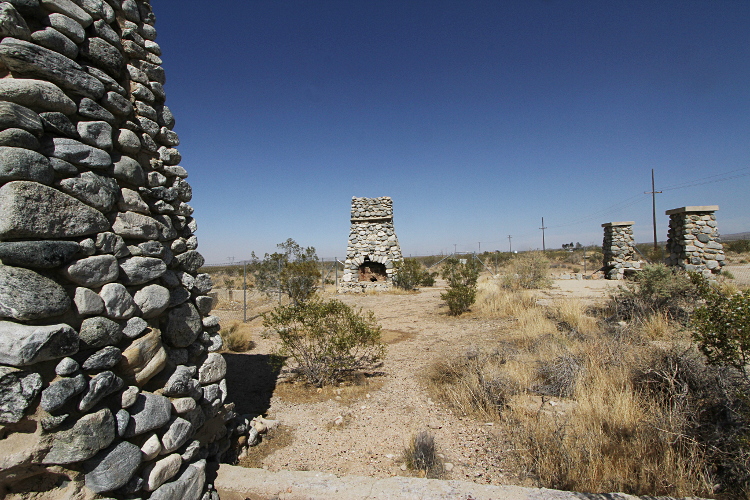
Stone fireplaces and pillars are all that remain of the community center.
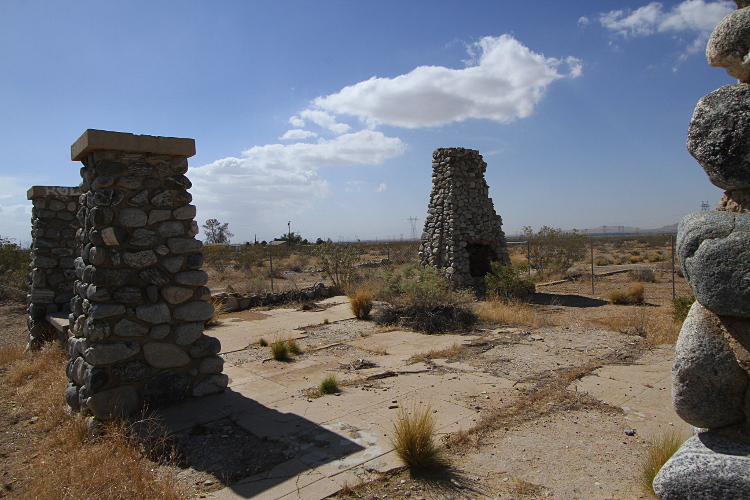
Another look at the ruins.
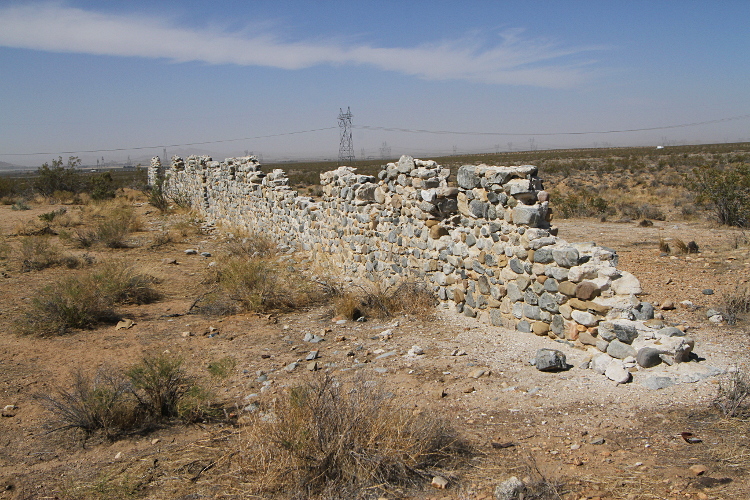
A rock wall.
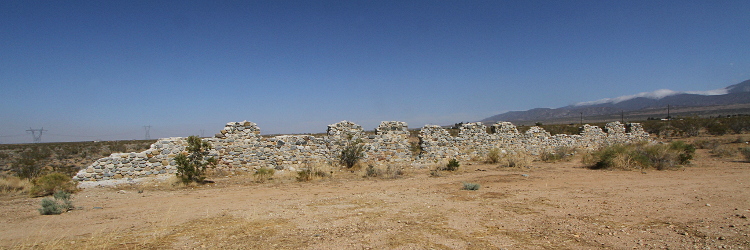
More.
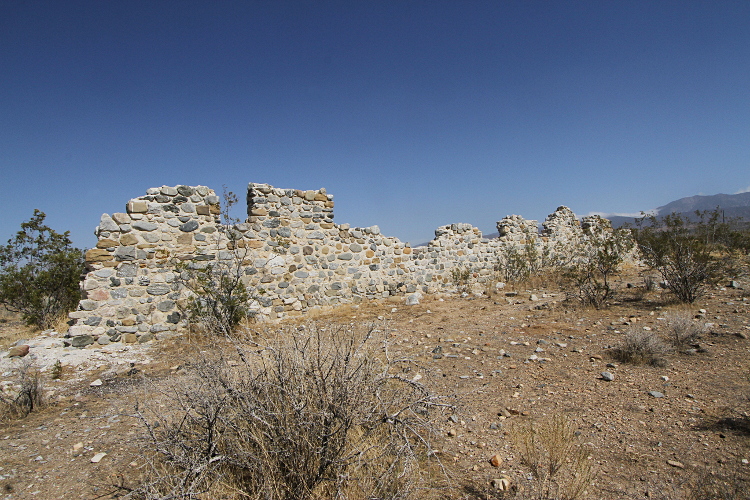
The native vegetation has returned in the 100+(a few) intervening years.
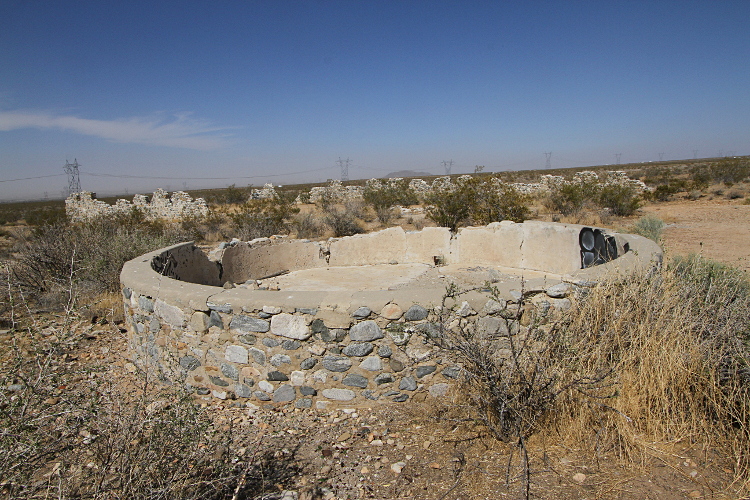
This appears to be a cistern. Rock walls in the background.
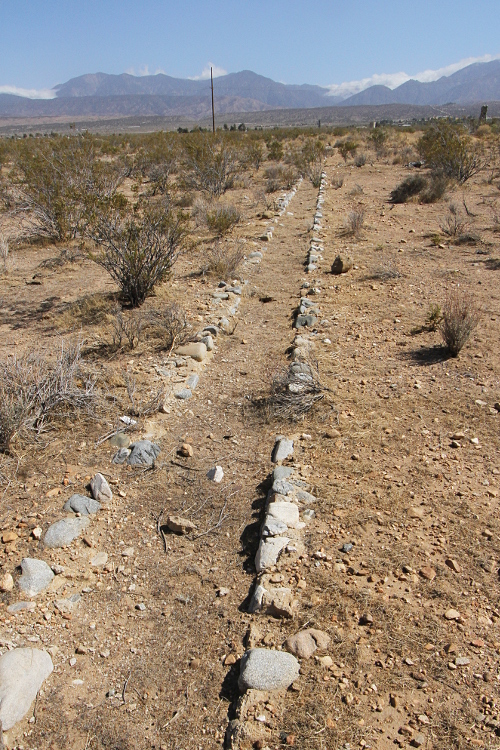
This looks like an aqueduct.
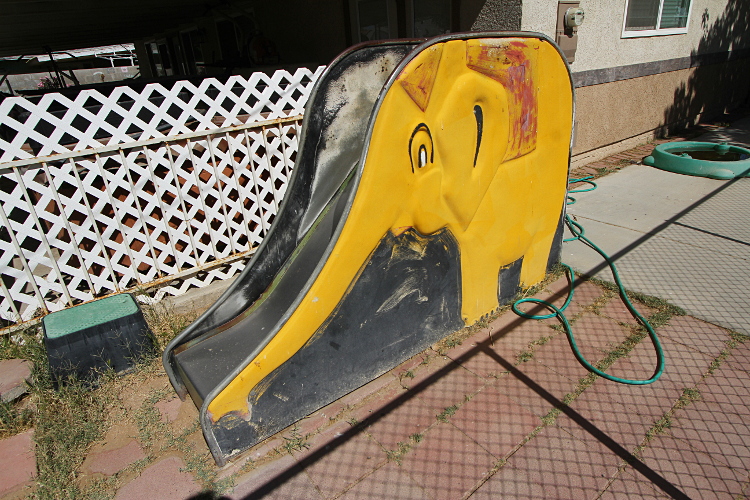
This Elephant Slide was at city park off of Warner Street in my youth.
It still lives, in the backyard of my parent's neighbors.
Still being used by kids.
One day while in Ridgecrest, I drove up to the nearby Sierra Nevada mountains.
I did some fishing in a tiny meadow stream for some tiny fish.
Does this count as microfishing? They are the gorgeous
California Golden Trout (Oncorhynchus mykiss aguabonita).
These fish are wild and native, but at the location I was fishing are
unfortunately not 100% genetically pure, due to past fish stocking.
The subspecies name aguabonita is Spanish for beautiful water.
Hard to argue with that, but it is not in keeping with the tradition using
Latin or Greek for scientific names. It is actually named for the Agua Bonita
waterfall, near where the first specimens were collected.
This waterfall is impassible to fish going upstream and has played a key
role over the eons in genetically isolating the California Golden Trout from
the Kern River Rainbow Trout downstream.
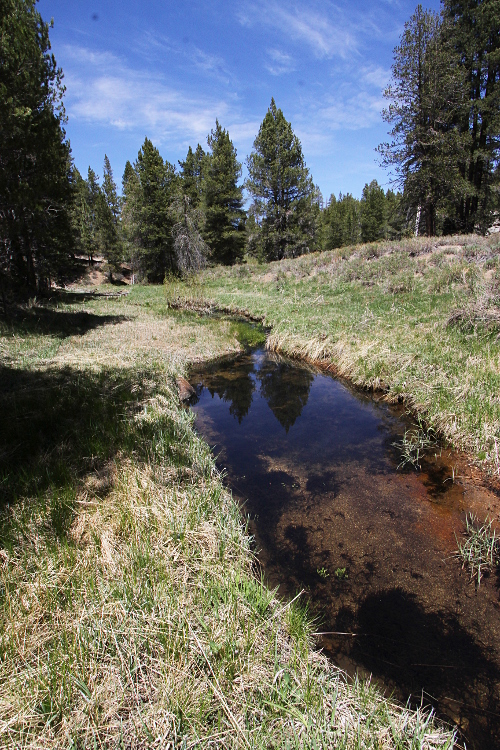
The tiny meadow stream.
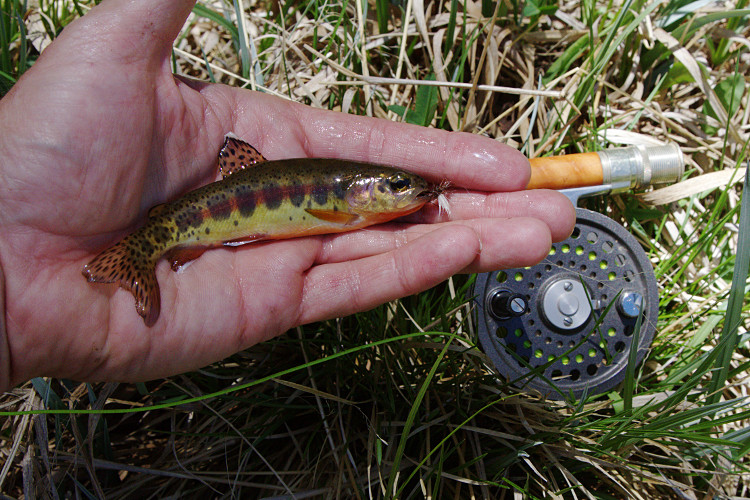
California Golden Trout (Oncorhynchus mykiss aguabonita).
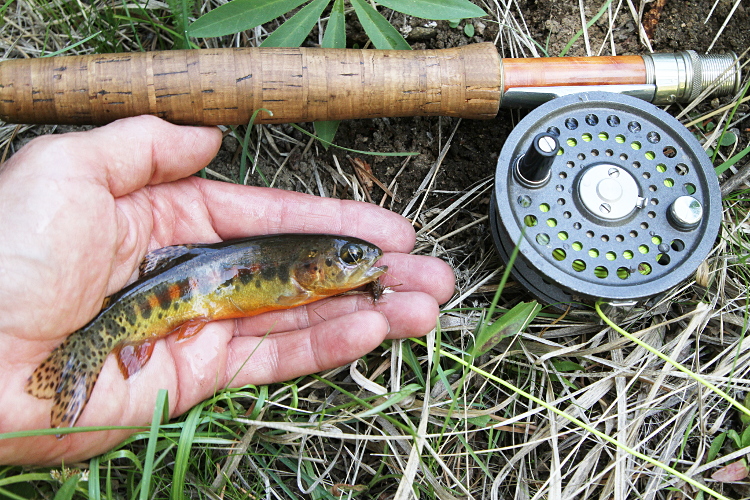
Another one.
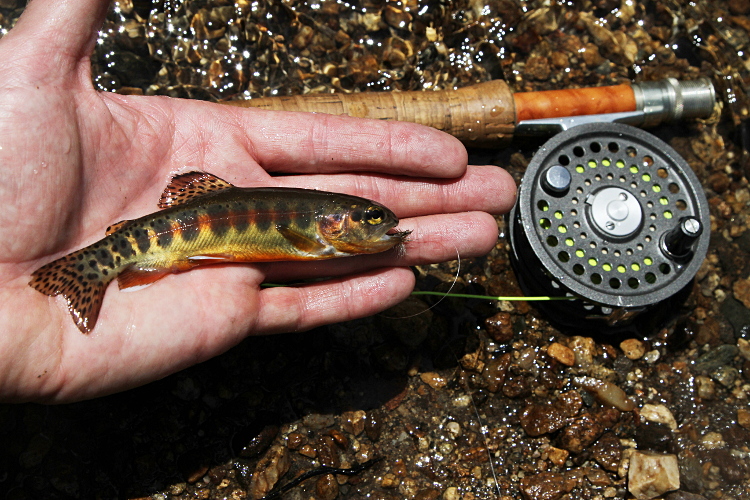
One more.
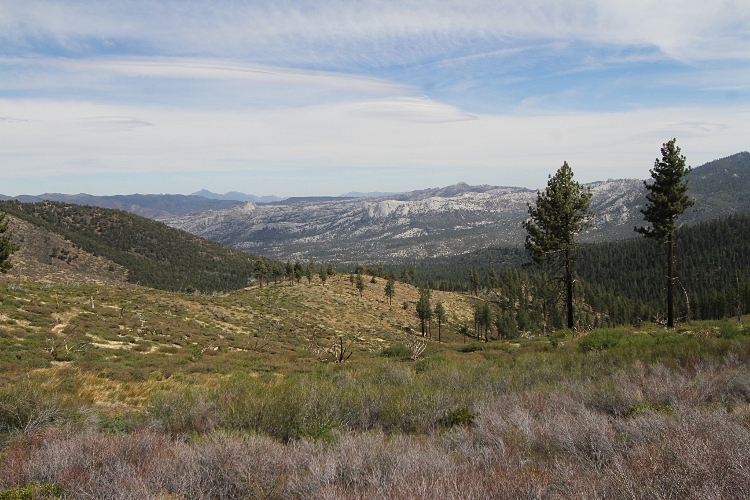
Farther up into the mountains, a past fire has opened up a breathtaking view
of the Domelands Wilderness.
That's it for my trip. I hope to be back soon.
Return to Carl's photos.














































